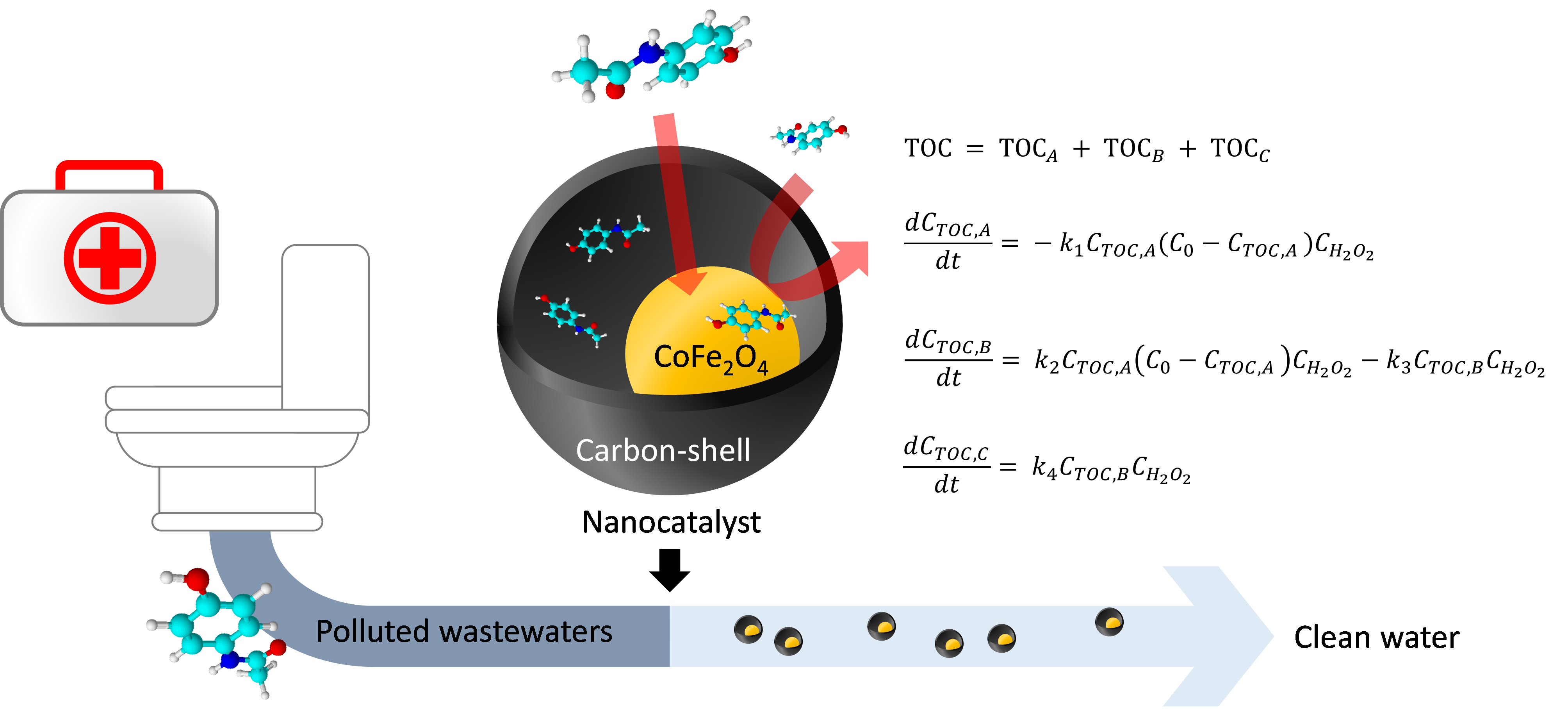
This work focuses on the use of carbon-coated magnetic cobalt ferrite nanoparticles as catalysts for catalytic wet peroxide oxidation (CWPO) of the emerging concern pollutant paracetamol (PCM). The magnetic core of the catalyst is composed of CoFe2O4 developed by a sol-gel method. The core is subsequently coated with a formaldehyde-resorcinol resin and TEOS, further carbonized at 600 ºC, and etched with NaOH to create a yolk-shell structure denoted as CoFe2O4@void@C. X-ray diffraction (XRD), transmission electron microscopy (TEM), and Fourier transformed infra-red (FTIR) analysis revealed that the uncoated core is composed of a CoFe2O4 cubic spinel structure with a crystallite size of 53 nm calculated using the Williamson-Hall (W-H) method, matching very well the average size observed by TEM (53.51 4.2 nm). Comparing the performances of CoFe2O4@void@C and the bare CoFe2O4 in the CWPO of paracetamol, total organic carbon (TOC) removals of 58% and 46% are obtained respectively after 24 h of reaction. An empirical kinetic model based on second-order and autocatalytic expressions was developed to suitably describe the decomposition of H2O2 and the removal of paracetamol using CoFe2O4@void@C as catalyst. The disappearance of TOC was well-described (r2 = 0.98) by a lumped kinetic model as the sum of TOCA, TOCB and TOCC, where TOCA is the TOC of the PCM, TOCB refers the intermediate products and TOCC is the TOC of the final products obtained during the CWPO of PCM.
Total file downloads: 19